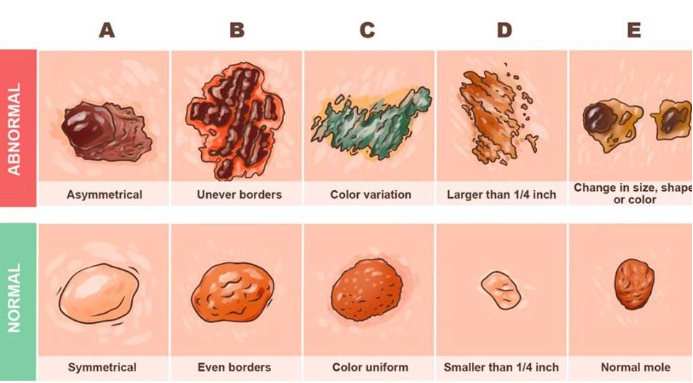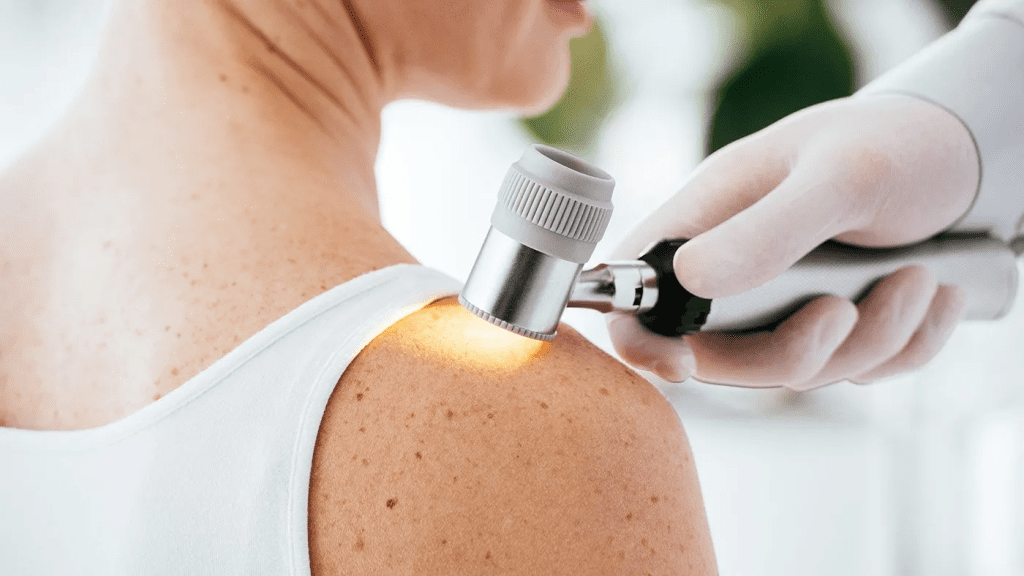Skin cancer is a silent but potentially deadly disease that can affect anyone, regardless of age or skin type. It’s often triggered by ultraviolet (UV) radiation, typically from the sun, but it can also develop in areas not regularly exposed to sunlight. With early detection, however, skin cancer can be treated successfully. This guide will help you understand the key signs, how to perform self-checks, and why a proactive approach can truly save lives.
Why Skin Cancer Detection Matters

Skin cancer is the most common form of cancer in the U.S., yet many people don’t take it seriously until it’s too late. While most skin cancers are non-life-threatening, melanoma—a more aggressive form—accounts for a significant percentage of skin cancer deaths. Regular self-checks and knowing what to look for can make all the difference in catching potential problems before they escalate.
What is Skin Cancer? Understanding the Basics
Skin cancer arises when abnormal cells grow uncontrollably in the skin’s outer layers. These cancerous cells can be triggered by repeated sun exposure, sunburns, tanning beds, or even genetic factors. There are several types of skin cancer:
- Basal Cell Carcinoma (BCC): The most common, often appearing as a pearly bump or a flesh-colored patch.
- Squamous Cell Carcinoma (SCC): Often shows up as a rough, scaly patch or a wart-like growth.
- Melanoma: The most dangerous type, known for its ability to spread rapidly to other parts of the body.
While BCC and SCC can usually be treated effectively if caught early, melanoma poses a much greater threat due to its aggressive nature.
The ABCDEs of Skin Cancer Detection
When performing self-examinations, it’s crucial to remember the ABCDEs, a simple method developed by dermatologists to identify suspicious moles or skin changes:
- Asymmetry: One half of the mole doesn’t match the other in shape or color.
- Borders: Uneven, ragged, or blurred edges are warning signs.
- Color: Variations in color, such as multiple shades of brown, black, pink, or red, could indicate danger.
- Diameter: Moles larger than 1/4 inch (about the size of a pencil eraser) need closer inspection.
- Evolving: Any changes in size, shape, or color over time should be evaluated by a doctor.
These signs can help distinguish normal moles from potentially cancerous growths. Consistent checks, noting any changes, can significantly increase the chances of early detection.
How to Perform a Self-Skin Check
Regular self-examinations are crucial for early detection, ideally once a month. Here’s a step-by-step guide to ensure you don’t miss a spot:
- Start with a Full-Body Scan: Use a full-length mirror to examine your entire body, from head to toe. Don’t forget areas like your scalp, underarms, between fingers and toes, and even the soles of your feet.
- Use a Hand Mirror: For hard-to-see areas like your back and the back of your thighs, use a handheld mirror to get a better view.
- Ask for Help: If possible, ask a family member or partner to check areas you can’t see clearly, such as your scalp and behind your ears.
- Track Changes with a Body Map: Use a printable body map to record the size, shape, and location of any spots or moles. This will help you monitor changes over time and provide clear information to your healthcare provider.
Common Myths About Skin Cancer Detection

Many people assume skin cancer only develops in areas that receive frequent sun exposure. However, melanoma can appear in unexpected places like the scalp, between the toes, or under the nails. Debunking such myths is crucial:
- Myth: Dark skin can’t get skin cancer. While those with darker skin tones have lower risks, they are not immune. In fact, when skin cancer does occur in people with darker skin, it’s often more advanced and harder to treat.
- Myth: Sunscreen prevents all skin cancers. While sunscreen reduces the risk, it doesn’t eliminate it entirely. Protective clothing, sunglasses, and seeking shade are also essential parts of prevention.
How to Protect Yourself from Skin Cancer
Prevention is just as vital as detection. Incorporating these habits into your routine can reduce your risk:
- Apply Broad-Spectrum Sunscreen Daily: Use sunscreen with at least SPF 30, even on cloudy days. Reapply every two hours, especially after swimming or sweating.
- Wear Protective Clothing: Long-sleeved shirts, wide-brimmed hats, and sunglasses with UV protection can minimize UV exposure.
- Seek Shade: Avoid being outside during peak UV hours, usually between 10 a.m. and 4 p.m.
- Avoid Tanning Beds: Artificial UV rays are just as harmful as the sun and can significantly increase the risk of skin cancer.
Why Early Detection Saves Lives

The most compelling reason to conduct regular skin checks and see a dermatologist for annual screenings is simple: early detection can save your life. When caught early, skin cancer has a high survival rate, especially melanoma. A proactive approach not only helps identify potential problems but also gives you peace of mind knowing you’re taking charge of your health.
Conclusion
Detecting skin cancer early is vital to reducing the risk of serious outcomes. Regular self-checks, understanding the ABCDEs, and taking preventive measures can make a difference. Protect yourself from harmful UV rays, stay vigilant with regular skin exams, and consult a dermatologist if you notice any unusual changes. Taking control of your skin health today could save your life tomorrow.


